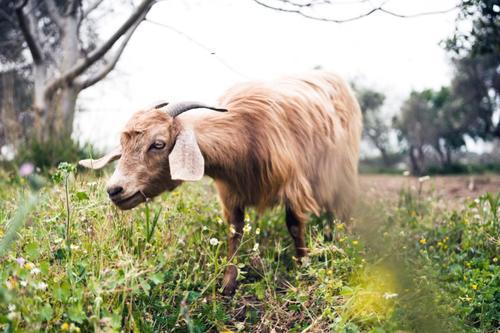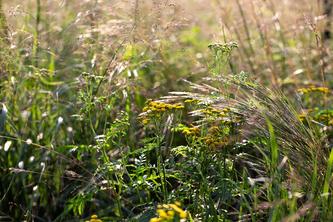
If you have visited a park or preserve lately, you may have noticed a different type of visitor — livestock. That’s because land managers are increasingly turning to livestock such as cattle, sheep, goats and horses to manage unwanted weeds in the Midwestern U.S. and across the country.
Targeted grazing, or prescribed grazing, is the careful use of livestock to meet vegetation management goals. Practitioners of targeted grazing manipulate the timing, intensity and duration of grazing in order to control undesired plants that are invasive, aggressive or pose fire risks. Ideally, this will also support the recovery of native vegetation.
To find out if this strategy is effective, researchers at University of Minnesota’s College of Veterinary Medicine and the College of Food, Agricultural and Natural Resource Sciences (CFANS) rigorously synthesized the results of 70 individual studies to set expectations for the effects of targeted grazing on invasive and otherwise unwanted plants and plant communities.
Published in Restoration Ecology, the study found that:
- Targeted grazing significantly reduces the abundance of the undesired plants that the livestock were brought in to control.
- Targeted grazing tended to increase the number of plant species in grazed areas, which is generally a good thing from an ecological perspective.
However, areas of uncertainty remain; in particular, most studies tend to lump native and non-native species, obscuring whether native flora or other weeds were the beneficiaries of target plant control. Additionally, vegetation monitoring usually ended once the grazing was done, making it unclear whether targeted grazing provided lasting or fleeting benefits.
“In this study, we were able to determine that targeted grazing can be an effective tool, but we also identified additional gaps in our knowledge of this tool that future studies could help close,” said Tiffany Wolf, associate professor in the College of Veterinary Medicine.
More studies are needed to provide information on native and non-native species in the future to gain a better understanding of the effectiveness of this technique for plant community restoration. It is also critical that future research addresses the longer-term outcomes of targeted grazing after the livestock head back to the farm.
“Trying to control invasive plants is one of the biggest challenges in land management and ecological restoration,” said Daniel Larkin, assistant professor in CFANS. “Employing livestock to aid in this effort is appealing, but we need a stronger scientific foundation to know when and where it’s the right approach. Our synthesis represents one important addition to this foundation.”
Funding for this project was provided by the Minnesota Invasive Terrestrial Plants and Pests Center through the Environment and Natural Resources Trust Fund as recommended by the Legislative-Citizen Commission on Minnesota Resources (LCCMR).
About the College of Food, Agricultural and Natural Resource Sciences
The University of Minnesota College of Food, Agricultural and Natural Resource Sciences (CFANS) offers students and the community unparalleled experiential learning opportunities through its 10 research and outreach centers across Minnesota, the Minnesota Landscape Arboretum and the Bell Museum of Natural History. Among its varied degree programs for undergraduate and graduate students are agricultural education, marketing communications, health and nutrition, and natural resources science and management. Learn more at cfans.umn.edu.
About the College of Veterinary Medicine
The University of Minnesota College of Veterinary Medicine affects the lives of animals and people every day through educational, research, service, and outreach programs. Established in 1947, the University of Minnesota College of Veterinary Medicine is Minnesota’s only veterinary college. Fully accredited, the college has graduated nearly 4,000 veterinarians and hundreds of scientists. The college is also home to the Veterinary Medical Center, the Veterinary Diagnostic Laboratory, the Leatherdale Equine Center and The Raptor Center. To learn more, visit vetmed.umn.edu.
- Categories:
- Agriculture and Environment
- Animals





